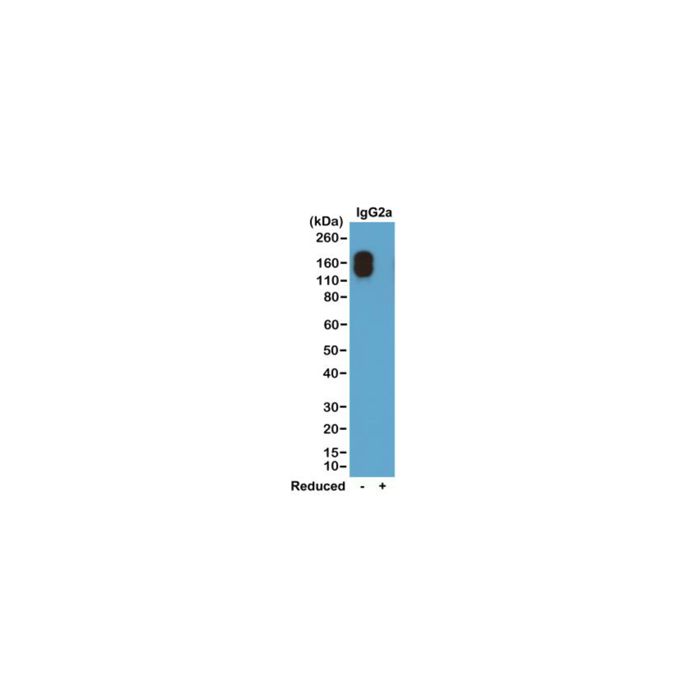Cookie Policy: This site uses cookies to improve your experience. You can find out more about our use of cookies in our Privacy Policy. By continuing to browse this site you agree to our use of cookies.
RevMab
anti-IgG2a kappa (mouse), Rabbit Monoclonal (RM107) (Biotin)

| Product Details | |
|---|---|
| Synonyms | Immunoglobulin G2a kappa |
| Product Type | Recombinant Antibody |
| Properties | |
| Clone | RM107 |
| Isotype | Rabbit IgG |
| Source/Host | Rabbit |
| Immunogen/Antigen | Mouse IgG. |
| Label/Conjugates | Biotin |
| Application |
ELISA: 0.005 µg/ml-0.2 µg/ml |
| Crossreactivity | Mouse |
| Specificity | This antibody reacts to the Fab region of mouse IgG2ak. No cross reactivity with mouse IgG2al, IgG1, IgG3, IgM, IgA, IgE, human IgG, rat IgG, or goat IgG. |
| Purity | Protein A purified. |
| Purity Detail | Protein A affinity purified from an animal origin-free culture supernatant. |
| Concentration | 1 mg/ml |
| Formulation | Liquid. 50% Glycerol/PBS with 1% BSA and 0.09% sodium azide. |
| Other Product Data |
Click here for Original Manufacturer Product Datasheet |
| Accession Number | P01863 |
| Declaration | Manufactured by RevMab Biosciences. |
| Shipping and Handling | |
| Shipping | BLUE ICE |
| Long Term Storage | -20°C |
| Handling Advice | Avoid freeze/thaw cycles. |
| Use/Stability | Stable for at least 1 year after receipt when stored at -20°C. |
| Documents | |
| Product Specification Sheet | |
| Datasheet |
 Download PDF Download PDF |
Immunoglobulin G (IgG), a monomer, is the predominant Ig class present in serum. Produced as part of the secondary immune response to an antigen, this class of immunoglobulin constitutes approximately 75% of total serum Ig. In mice there are four different IgG subclasses known, namely IgG1, IgG2a/c, IgG2b, and IgG3, which are determined by their respective C regions γ1, γ2a/c, γ2b, and γ3. The mutually exclusive occurrence of either IgG2a or IgG2c is determined by the genetic background of the mouse strain; however, both IgG2a and IgG2c are thought to have similar characteristics. Because of its relative abundance and excellent specificity toward antigens, IgG is the principle antibody used in immunological research and clinical diagnostics. This anti-mouse secondary antibody has well-characterized specificity for mouse IgG immunoglobulins and is useful in the detection, sorting or purification of its specified target. In general, secondary antibodies offer increased versatility enabling users to use many detection systems (e.g. HRP, AP, fluorescence). They can also provide greater sensitivity through signal amplification as multiple secondary antibodies can bind to a single primary antibody.





